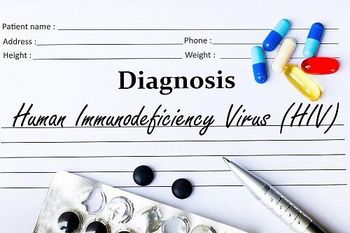
Ordering With Foresight
Can duration of therapy requirements at the time of antibiotic order entry decrease antibiotic use?
Antibiotic treatment requires not only the right drug but also an appropriate duration—a common source of error. Approximately 30% of antibiotic orders are unnecessarily prolonged, even for infections with well-established guideline-recommended durations of therapy, such as community-acquired pneumonia, urinary tract infections, and skin and soft tissue infections.1 These prolonged courses often result from outdated habits, poor guideline awareness, miscommunication upon transitions of care, or misinterpretation of the electronic medical record (EMR). Although prospective audit and feedback (PAF) is recognized as a notably effective method of intervention, it often occurs after patients have already received excessive therapy.2,3 Ideally, PAF would be performed proactively, but this is complicated by intended durations of therapy rarely being elucidated within the EMR. Recognizing this, a team of pediatric clinicians from Vanderbilt University Medical Center in Nashville, Tennessee, proposed a technological change that may offer a timely and effective solution to this long-standing issue.
In February 2025, Wright et al published a pre- to postintervention study evaluating an EMR change that required clinicians to enter antibiotic duration (in doses, hours, or days) at the time of order entry for all pediatric inpatients. The study focused on 4 indications—empiric treatment, respiratory tract infection, intra-abdominal/gastrointestinal infection, and skin and soft tissue infection—that account for approximately 60% of antibiotic use at the study site.4 The primary outcome was days of therapy (DOT) per 1000 patient days (PD), as defined by the National Healthcare Safety Network (NHSN).5 Secondary outcomes assessed DOT per 1000 PD by the following NHSN classifications: community-onset antibiotics, hospital-onset antibiotics, resistant gram-positive antibiotics (aside from vancomycin, which was independently analyzed), and other.
A total of 4827 patients were included; case mix index and patient demographics each remained consistent throughout the study period. Analyzed data for primary and secondary outcomes can be found in the TABLE. A nonsignificant decrease in overall DOT was observed; a significant decrease was noted for empiric treatment, whereas other indications showed mixed trends. Among secondary outcomes, significant reductions were observed in hospital-onset antibiotics and vancomycin use, and community-onset and resistant gram-positive antibiotics showed a nonsignificant increase.4
TABLE. DOT Per 1000 Days Present by Indication and NHSN Classificationa
In addition, unpublished institutional data from the same time period as the study showed improved accuracy in indication selection. This was presumably due to increased clinician attentiveness, which, in turn, likely led to the trend observed in the primary outcome (less empiric treatment DOT and increased site-specific DOT). Furthermore, greater thoughtfulness around indications appeared to have had a translational effect on prescribing patterns, as reflected in the secondary outcome trend showing reduced use of hospital-onset antibiotics and increased use of community-onset antibiotics. For example, confidence in diagnosis may have subsequently helped clinicians better conceptualize cases in which empiric treatment with hospital-onset antibiotics was not indicated (ie, community-onset infections without risk factors for gram-negative resistance or Pseudomonas aeruginosa involvement).4
A key limitation of this study was the use of DOT per 1000 PD as a marker of duration of therapy, which is intrinsically susceptible to inflation. For example, the observed increase in DOT for intra-abdominal/gastrointestinal infections may be attributed to a shift in prescribing behavior noted by the authors: Single-agent therapy (piperacillin/tazobactam, 1 DOT) was preferred in the preintervention period, whereas combination therapy (cefepime plus metronidazole, 2 DOT) was favored in the postintervention period, thus leading to an inflation in DOT despite similar clinical intent. A comparable trend was seen in the respiratory tract infection indication, with more dual methicillin-resistant Staphylococcus aureus coverage ordered in the postintervention period. The effects of this specific practice change were compounded by an increased number of patients in the postintervention respiratory tract infection subgroup. However, after evaluating duration of therapy in a more traditional fashion (days), the authors noted a decrease from a median of 6 days (IQR, 3-13) to a median of 4 days (IQR, 2-8), suggesting more intuitive use of antibiotics despite higher DOT values.4
The antimicrobial stewardship (ASP) team, who continued to perform daily audit and feedback, did not identify any harm from unintentional antibiotic discontinuation. Additionally, a modest (2%) decrease was observed in 30-day readmission rates over the study period. Not only did the studied intervention seem to make clinicians more intentional with their treatment, but it also uncovered the previously unelucidated duration of therapy within the EMR, making it easier for the ASP team to proactively identify and intervene on improper durations. Ultimately, requiring clinicians to enter stop dates at the time of antibiotic order entry—combined with an active ASP team—was associated with decreased and more targeted antibiotic utilization.4
The adaptation of such practices should certainly be considered within each health care system.
References
1. Core Elements of Hospital Antibiotic Stewardship Programs: 2019. Centers for Disease Control and Prevention. 2019. Accessed July 28, 2025. https://www.cdc.gov/antibiotic-use/healthcare/pdfs/hospital-core-elements-H.pdf
2. Morrill HJ, Caffrey AR, Gaitanis MM, LaPlante KL. Impact of a prospective audit and feedback antimicrobial stewardship program at a Veterans Affairs medical center: a six-point assessment. PLoS One. 2016;11(3):e0150795. doi:10.1371/journal.pone.0150795
3. Yamaguchi R, Yamamoto T, Okamoto K, et al. Prospective audit and feedback implementation by a multidisciplinary antimicrobial stewardship team shortens the time to de-escalation of anti-MRSA agents. PLoS One. 2022;17(7):e0271812. doi:10.1371/journal.pone.0271812
4. Wright MR, Gillon J, Katz SE, Banerjee R. Requiring durations of therapy at the time of antibiotic order entry reduces antibiotic use. Antimicrob Steward Healthc Epidemiol. 2025;5(1):e45. doi:10.1017/ash.2025.20
5. Antimicrobial Use and Resistance (AUR) Module. National Healthcare Safety Network. January 2025. Accessed June 7, 2025. https://www.cdc.gov/nhsn/pdfs/pscmanual/11pscaurcurrent.pdf
Newsletter
Stay ahead of emerging infectious disease threats with expert insights and breaking research. Subscribe now to get updates delivered straight to your inbox.



















































































































































































































































































